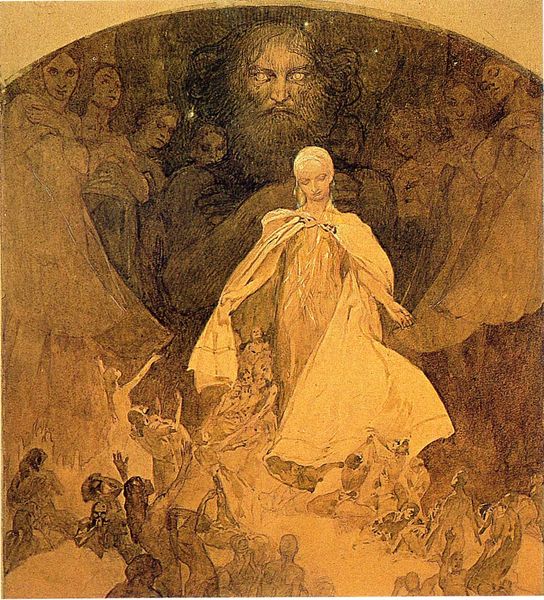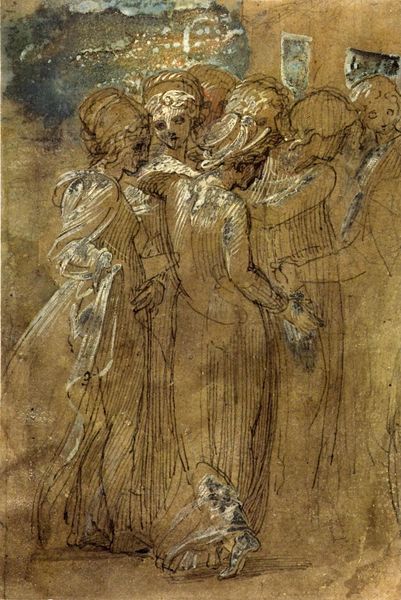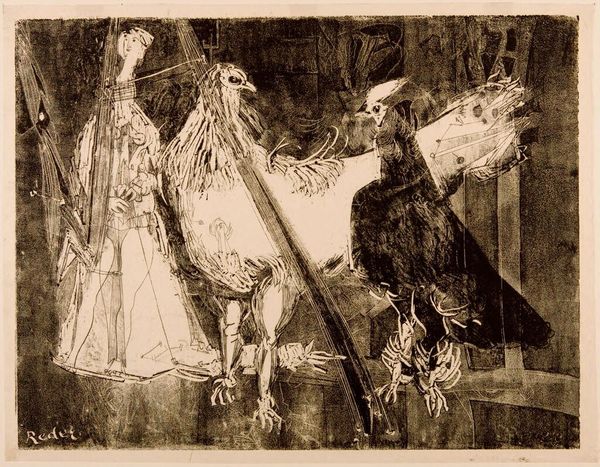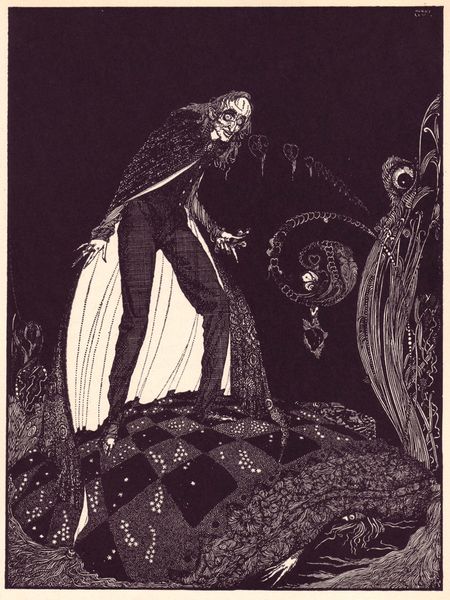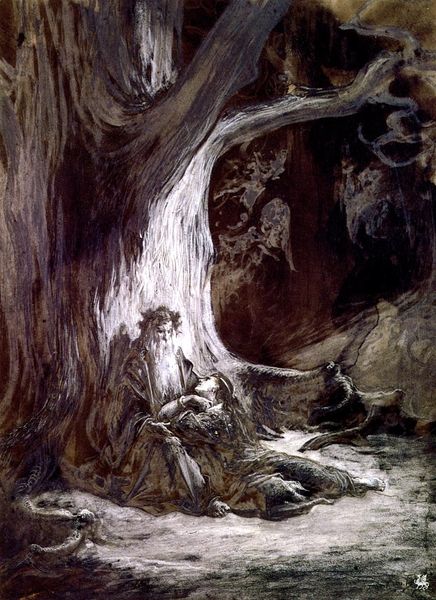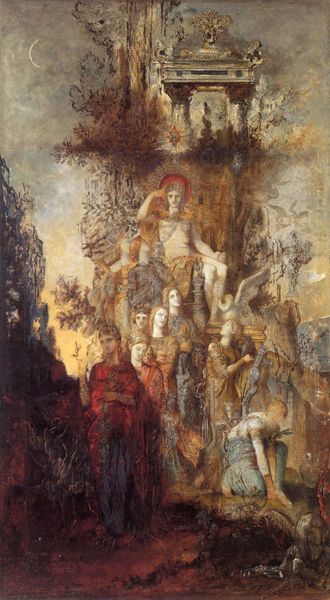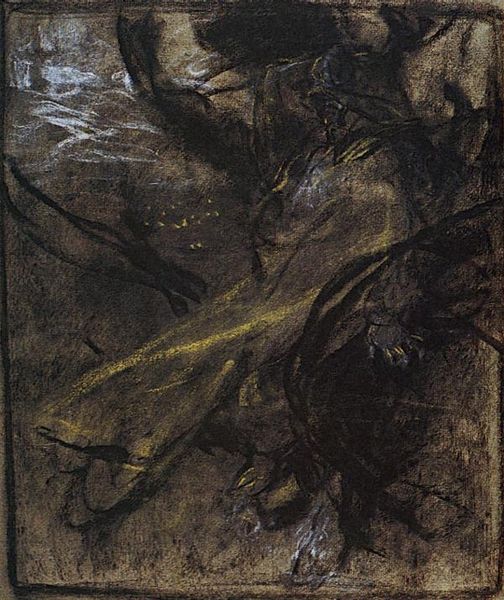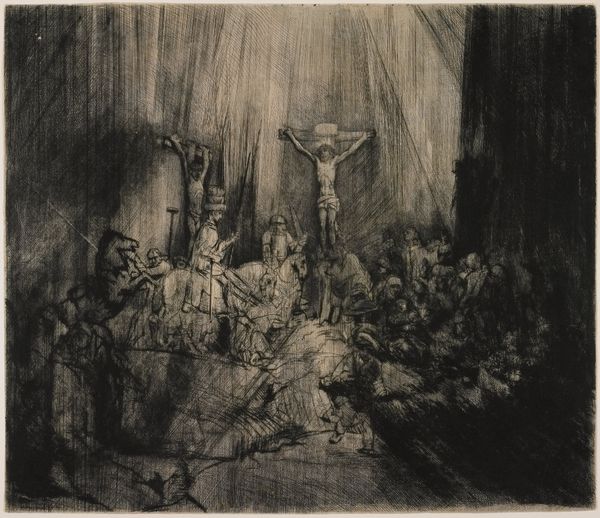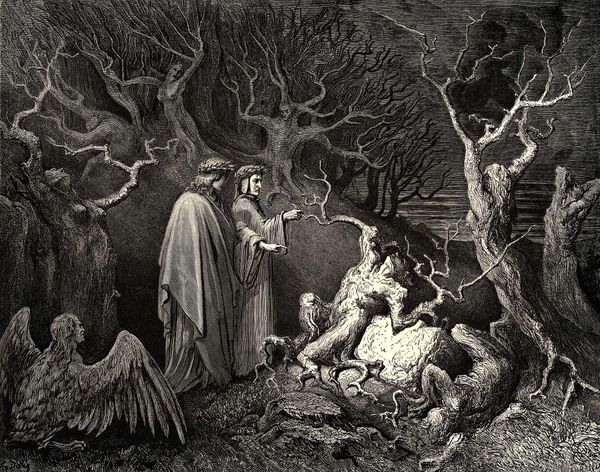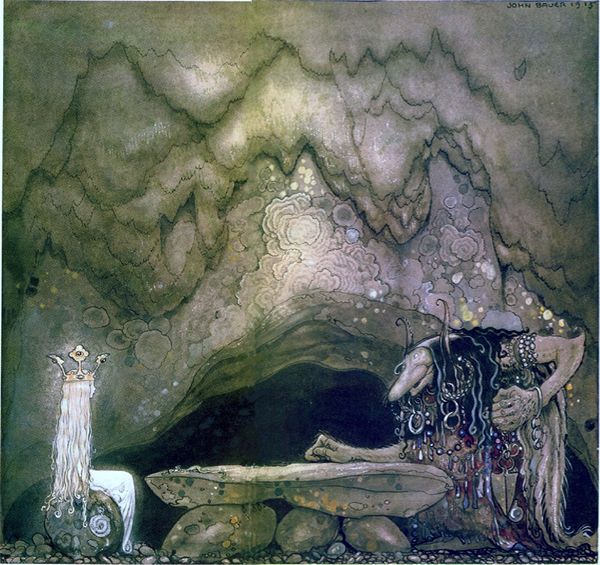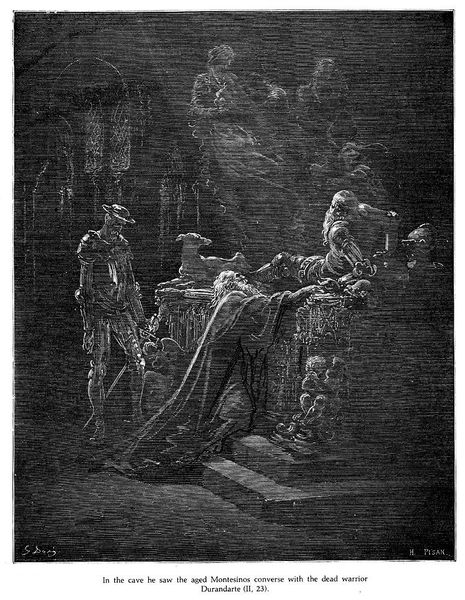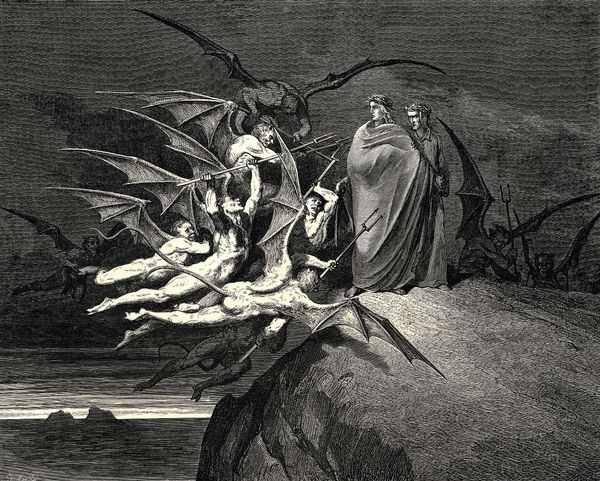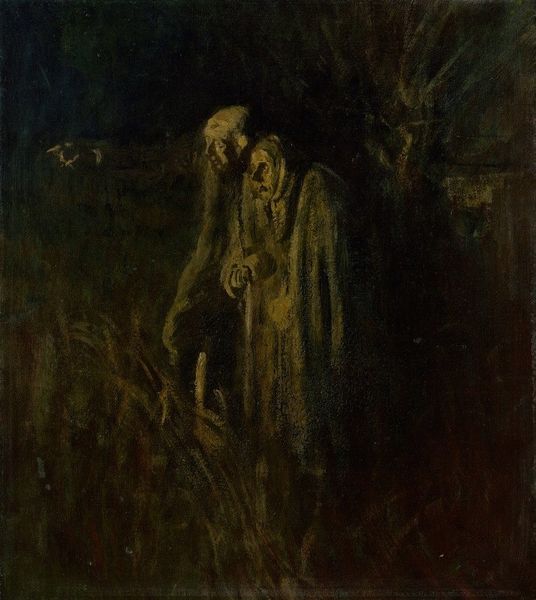
drawing, ink, pen
#
portrait
#
drawing
#
narrative-art
#
landscape
#
figuration
#
ink
#
romanticism
#
line
#
pen
#
history-painting
#
mixed media
Copyright: Public domain
Editor: So, here we have Gustave Doré's drawing, "Spectrum appearance of Banquo," created with pen and ink. It definitely sets a rather spooky tone. What really strikes me is the density of figures packed into what seems to be a rather confined space, though the specific setting remains rather ambiguous. How do you read this artwork? Curator: This illustration really captures the spirit of Romanticism's interest in the macabre. Consider the cultural moment; there's a real fascination with Shakespeare and history. It isn’t just a simple drawing. How do you think the narrative element works with, or perhaps even against, the artistic style of the piece? Editor: Well, the line work definitely helps intensify the drama, doesn’t it? The figures are shrouded in shadow, but illuminated enough to distinguish characters within the historical context of a history painting. I’d imagine these rapid strokes add to the frenzy of the scene…but maybe even distract? Curator: Precisely. That balance – or imbalance – is key. Doré isn't simply illustrating a scene; he is interpreting it through the lens of his own time. This puts his role not just as an artist, but as a storyteller engaged in an ongoing conversation with cultural history. This scene comes across, to me, as something more that just representing history. Editor: So, by examining this artwork and how it fits into his particular place and time in history, we can start to interpret not just Doré's intention, but also consider its implications as it depicts something larger, like cultural history? Curator: Absolutely. We're seeing art perform its public role; we’re decoding visual politics from a moment in time, as seen through the narrative. That, to me, makes Doré's choices even more intriguing.
Comments
No comments
Be the first to comment and join the conversation on the ultimate creative platform.
